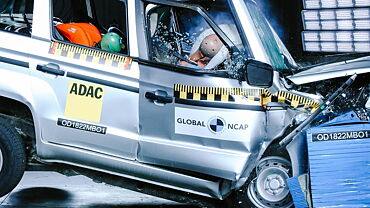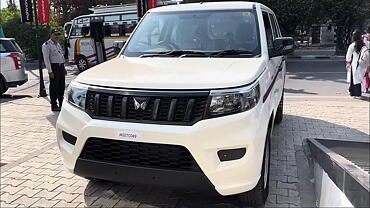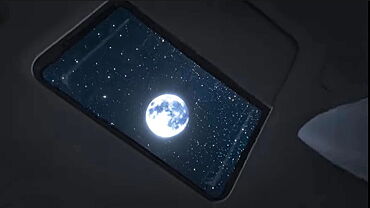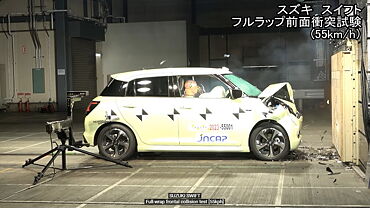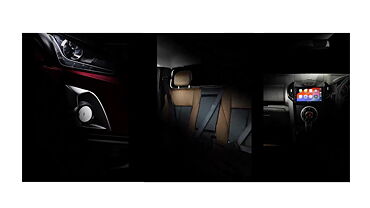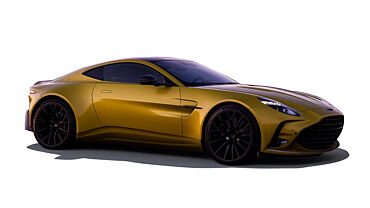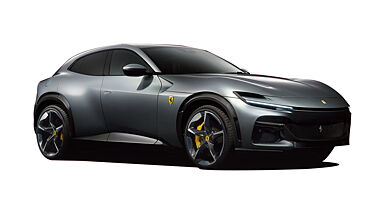Cartrade Comparison Test
Introduction
There are people who want to buy a powerful diesel car with an automatic gearbox. A car that can carry a family in comfort, preferably an extended family of 5-6 people. Plus a car that provides a hassle-free ownership experience. When it comes to factors like these, the Innova has been the most sought after car in India and the new Innova Crysta continues to satisfy these needs.
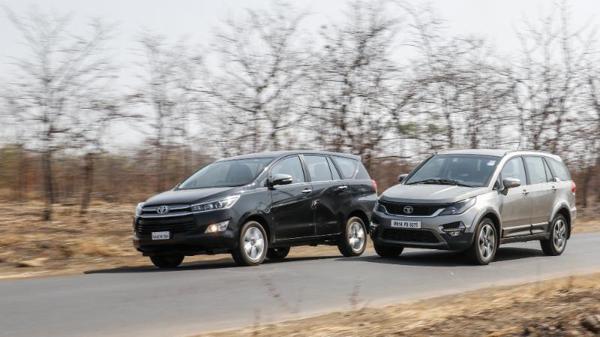
Now, we have another player in the market with Tata offering the Hexa in this space. So how does it stack up against the Innova for the afore-mentioned needs? Is it a product worth considering? We find out.

Exterior
The new Tata Hexa is being marketed as a SUV even if it is based on the same platform as the Aria MPV. And why not, especially when Tata's Impact design philosophy has brought in fresh avatar for the vehicle. The upright stance, the aggressive front with a bold grille, chiseled bumper and tall bonnet give it the necessary SUV styling traits. The flared wheel arches and funky 19-inch alloy wheels further add to its appeal. The LED tail lamps and chrome treatment freshen up things at the back, but the boxy shape still reminds you of the Aria MPV.

The Innova, on the other hand, doesn't pretend to be anything apart from an MPV. It is a purpose-built people carrier, even if the Innova Crysta is completely different from the earlier Innova. It's a more upmarket product with a stylish fascia with angular projector headlamps, DRLs and elegant grille. Even though the silhouette remains the same, new alloy wheels and the angular quarter glass near the D-Pillar add up as admirable traits. Another attribute is the reworked tail section with boomerang-shaped tail lamps.
In terms of dimensions, the Toyota Innova Crysta is 4,735mm in length, 1,830mm in width, 1,795mm in height and has a wheelbase of 2,750mm. On the other hand, the Tata Hexa measures 4,788mm in length, 1,903mm in width and 1,791mm in height and gets a wheelbase of 2,850mm. So the Hexa is longer and wider than the Crysta, but the latter is slightly taller than it. But then again, the Hexa has a 100mm of longer wheelbase meaning more room inside the cabin.
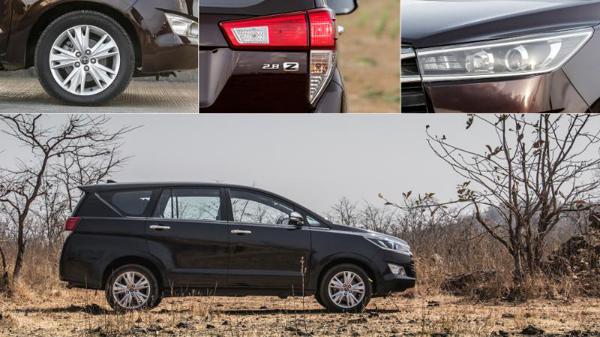
Interior
Things have been completely refreshed in the Aria's successor with the right use of good quality materials. The all-black treatment looks good and doesn't make the black plastic look tacky at all. The smaller bits like chrome outlines and piano finish have upped the visual appeal and the interior looks pleasant to the eye. The leather seats are in black again with white stitching giving it a premium look. These seats are comfortable for long drives, especially the driver’s seat which is eight-way adjustable (manually). While the spacious second row of captain seats are nice and supportive, they could have been well-cushioned. As these seats don't completely tumble down, getting in the third row gets cumbersome. In fact, you might end up using the space between the second row of seats to enter the last bench. This space isn't very comfortable either, with less headroom and under thigh support making it ok to travel for some jaunts, but not over long journeys.
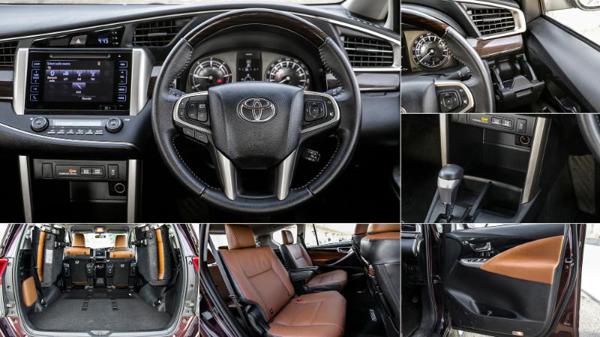
The Innova Crysta's interior is a very big transition from the older Innova. The new dark tan and brown tan colours do add on some glam to its styling. The best part is the swooping dashboard with elements nicely embedded in it. Apart from being a subtle looking cabin, it gets some styling elements like wood trim, silver outlines and soft door pads to add to the plush feel. The quadrilateral-shaped air-con vents are highly effective and also do not miss out on the appeal bit. The instrument cluster and central infotainment system is again something one will appreciate for its design. Like the design, the quality, fit and finish of the materials inside is commendable as it gives the interior a very premium feel. The seats are wrapped in brown tan leather; the ones that make it look sleek and classy. The driver seat is supportive and gets an electronically adjustable function. The rear seats too are wide and accommodating. So if you plan to squeeze in your full family, it wouldn’t be a problem. There is good legroom and shoulder room and the seats are well-cushioned too. Like the Hexa, the Crysta’s third row is also more of a squeeze due to the high floor and low seats. Then the angular quarter glass hampers visibility as well. At least, here the second row seats fully tumble making it easier to get in and out of the third row.

In terms of features, both the cars are well-loaded products. Right from a touch screen infotainment system, navigation, bluetooth, USB and aux-in ports, the cars get automatic headlamps, wipers, climate control and a multi-function steering wheel. On the safety front, the Crysta is packed with seven airbags, ABS, brake assist, ESP and hill-start assist. The Hexa comes loaded with two front airbags, two side airbags in the front and curtain airbags as well. It boasts of the latest four-channel ABS along with ESP. The Hexa has additional rear window blinds and an eight-way adjustable seat, but misses out on keyless entry and start and gets lesser stowage places (especially near the centre console). The Innova Crysta scores over the Hexa here as it gets all these features with the addition of an electronically adjustable driver seat and folding tray tables in the second row. While the foldable rear seats in the Hexa make for a good cargo space, they are still not as good as the excellent space created inside the Crysta.
Performance
A 2.2-litre four-cylinder Varicor 400 diesel engine powers the Hexa. This comes mated to a six-speed automatic gearbox, which we have sampled here. This is a powerful engine producing 156bhp of power and 400Nm of torque. It's a very potent mill to provide all the power as and when needed. It is responsive and refined even if there are some vibrations felt post 3,500rpm. Otherwise, the powerplant helps the big vehicle to accelerate easily and the torque makes sure you do not lose momentum on the go. The automatic transmission is smooth and changes gears without giving any shift shocks. With a tap on the accelerator, it understands whenever there is a need to down shift, thus making quick overtakes a cake walk.

The Innova Crysta is available in two diesel engine options. However, the six-speed automatic gearbox comes only with the one powered by the 2.8-litre GD diesel mill. This motor is smooth, doesn't have any rattling noise, but does become fairly audible when revved hard. Nonetheless, with 172bhp and 360Nm of torque, you hardly need to push your foot hard on the accelerator as there is loads of power on tap. Due to engine's free-revving nature and the wide powerband, power delivery feels very linear. Toyota is also offering two driving modes. However, the difference between the Eco mode and the power mode is hardly felt. The AT gearbox smoothly and quickly upshifts, but in city's stop-and-go traffic gets muddled at times. This is when you can use the sequential tip-tronic feature to downshift manually. Nevertheless, the drivetrain is designed for cruising in comfort, so there is no unnecessary surge of torque kicking in.
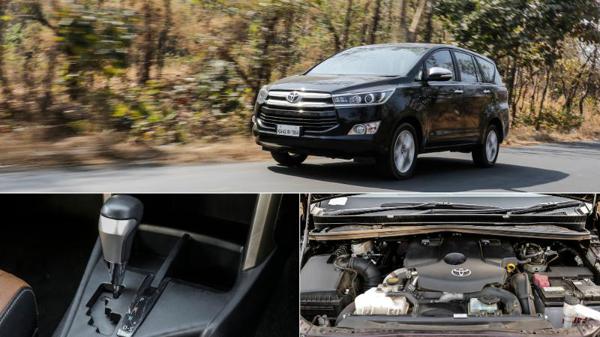
The most impressive bit on the Hexa is the ride quality that impressed us over the Crysta. It has been tuned so well to absorb jerks from potholes and bumps. This matters a lot on our pot-hole infested roads and broken tarmac as the Hexa also maintains composure over such surfaces. Comparatively, the Innova's firm suspension set-up doesn't take such surfaces in its stride very well. You can constantly hear the thud making you slow down your speed. Nevertheless, this suspension set-up does provide all round comfort for all occupants during long-haul drives. The Hexa also rolls a bit more than the Crysta around bends, while the Crysta feels quite a lot agile. The Hexa's steering is also on the heavier side. This is where the Crysta stands out with a light, better-weighted steering easing things within the city.
Conclusion
The Toyota Innova Crysta 2.8 ZX AT is priced at Rs 21.19 lakh (ex-showroom New Delhi), retailing to about Rs 25.03 lakh on-road. The Tata Hexa XTA 4x2, on the other hand, is priced at Rs 17.4 lakh and costs around Rs 20.56 lakh on-road putting forth an interesting proposition. At around Rs 4.5 lakh less than the Innova, your purpose of a diesel automatic seven-seater gets solved anyway. Then of course you also get those SUV (ish) looks and phenomenal ride quality. But then again, the Innova certainly has a lot to offer even if comes at a hefty price point. Also, the main USP of this MPV is the Toyota badge and its bullet proof reliability. So the price is in a way completely justified. Plus, for the way the Japanese carmaker has packaged the Innova Crysta with top levels of performance, refinement and luxury, it steers ahead of the competition.
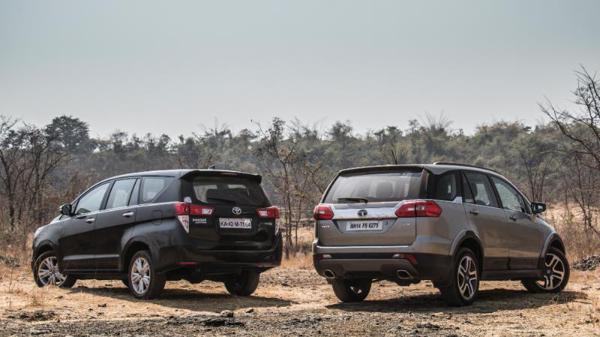
Pictures by Kapil Angane



![Toyota Innova Crysta [2020-2023] Toyota Innova Crysta [2020-2023]](https://imgd-ct.aeplcdn.com/160x89/n/cw/ec/51435/innova-crysta-exterior-right-front-three-quarter-3.jpeg?q=80)
